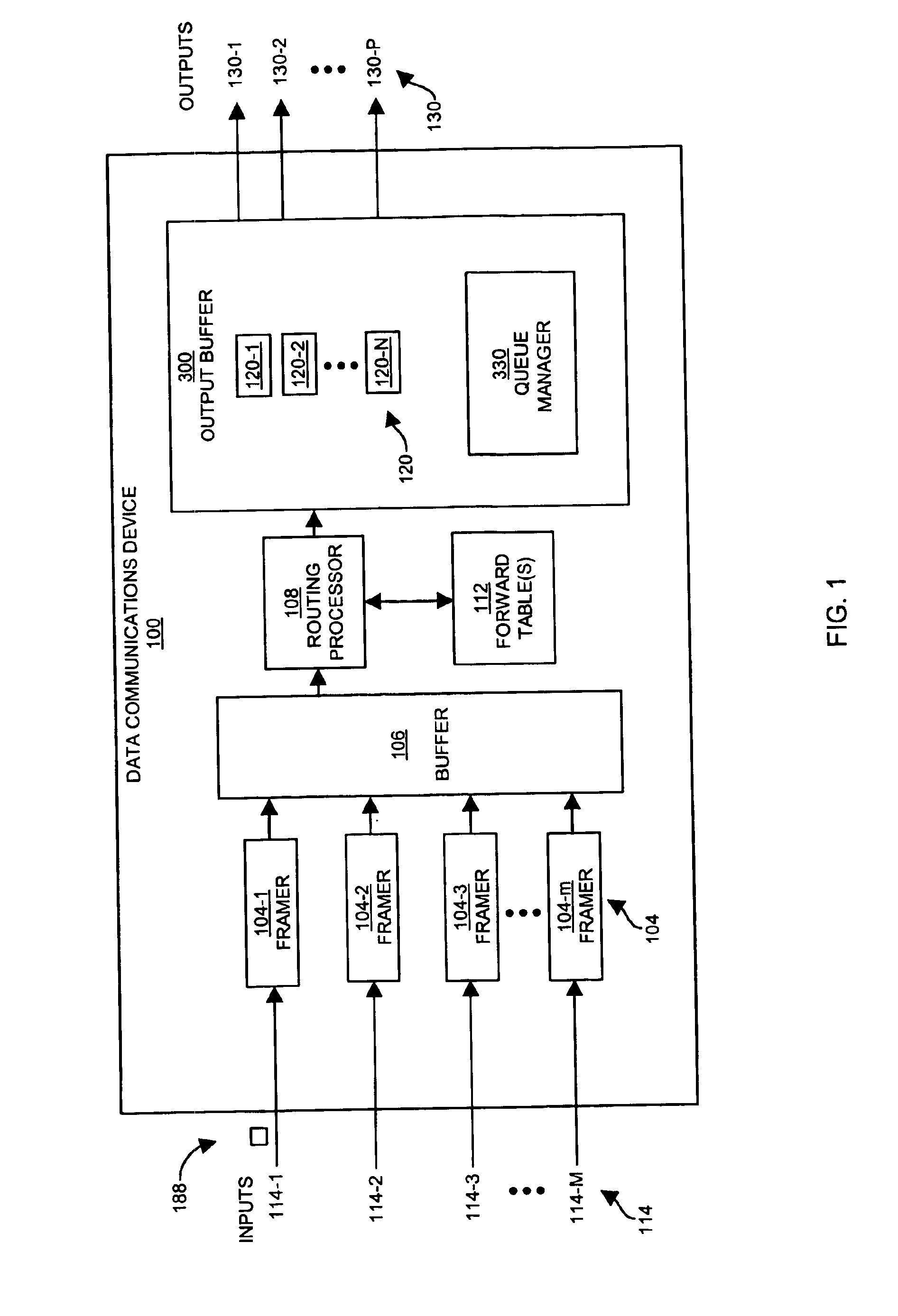Methods and apparatus for maintaining queues
a technology of queues and methods, applied in the direction of electric unknown time interval measurement, time indication, special data processing applications, etc., can solve the problems of queues being congested with excess data packets, real-time schedulers generally cannot tolerate over-commitment of resources, and the effect of reducing the complexity of the overall circui
- Summary
- Abstract
- Description
- Claims
- Application Information
AI Technical Summary
Benefits of technology
Problems solved by technology
Method used
Image
Examples
Embodiment Construction
Networking devices such as routers sometimes implement thousands of data queues to temporarily store data packets for later transmission to intended targets. In such applications, data information is initially stored in a selected queue before it is eventually retransmitted from an output port of the router to the appropriate destination. As a result of ever-increasing demand for bandwidth (e.g., Internet access) and simultaneous sharing of routers, queues in the routers can be inundated with an excessive inflow of data. On the back end of the router, the one or more queues can become “congested” as a result of a reduced outflow of data packets stored in the queues. If the queues are not serviced on a regular basis, clients can not be guaranteed at least a minimal rate of transferring data through a router.
As discussed, one aspect of the present invention involves monitoring the output of one or more queues using a monitor circuit. A real-time clock tracks the advancement of current...
PUM
 Login to View More
Login to View More Abstract
Description
Claims
Application Information
 Login to View More
Login to View More - R&D
- Intellectual Property
- Life Sciences
- Materials
- Tech Scout
- Unparalleled Data Quality
- Higher Quality Content
- 60% Fewer Hallucinations
Browse by: Latest US Patents, China's latest patents, Technical Efficacy Thesaurus, Application Domain, Technology Topic, Popular Technical Reports.
© 2025 PatSnap. All rights reserved.Legal|Privacy policy|Modern Slavery Act Transparency Statement|Sitemap|About US| Contact US: help@patsnap.com



